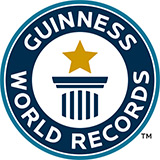First carnivorous sponge

- Who
- Abestopluma hypogea
- What
- First
- Where
- France
- When
- January 1995
The first species of carnivorous sponge made known to science was Abestopluma hypogea, which was discovered in January 1995 within a shallow-water Mediterranean cave off La Ciotat, France, by a team of researchers from France's Centre d'Océanologie de Marseille. It was found to employ novel tendril-like structures, long and slender in form, and not previously reported from sponges, to seize tiny crustaceans swimming nearby, which are the hauled inside its body and digested.
Prior to the discovery of this significant species, which is a demispongid belonging to the taxonomic family Cladorhizidae and was formally described in 1996, all sponges had been thought to be passive filter-feeders, in which a single layer of flagellated cells is utilized in pumping a unidirectional water current through the sponge's body. However, in carnivorous sponges this cell layer is absent. Moreover, further researches have revealed that in reality, carnivorous behaviour is both common and typical for cladorhizid sponges – it simply hadn’t been witnessed prior to the discovery of A. hypogea.


